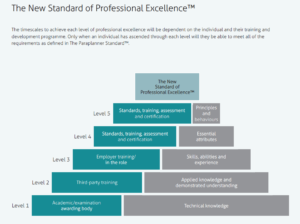Michelle Hoskin reviews the first year in which candidates have gone through The Paraplanner Standard™ and some of the issues it has thrown up for the profession
We are now well into the process of assessing paraplanners against The Paraplanner Standard™ and it has been interesting to see the results. I think to describe it as a ‘mixed bag’ would be an understatement.
It is interesting to see that despite the candidate’s assumption and hope that they would easily meet the requirements of the standard, given the fact that they were ‘doing the job’, the evidence suggests otherwise.
We know that the sector is still confused as to what a paraplanner is and actually does, and our assessment process is proving that this is still very much the case.
The challenge is that if you ask paraplanners what they are, they think they know. However, when we ask the financial advisers and financial planners what paraplanners do (which we have done), they really have no idea.
What are we seeing?
- The paraplanner sector is patchy. Despite the international clarification, the consistency of the delivery of the role is all over the place in terms of what it does and how it does it.
- The skills are so varied. We have assessed some of the most qualified paraplanners in the sector, but they simply do not have the application skills to transfer their knowledge into day-to-day delivery.
- Some are trusted by their firms and some are not. This means that the range of responsibilities goes from them doing the role in full, to simply getting the scraps of work from the adviser and or planner they support
- Varied team and support structures. Some work in hubs; some work directly for the planner and or adviser. This dynamic totally changes the level of responsibility and access to the coal face.
So, what can we all do about this?
- It has to start with education. We need to keep talking about the role in the right context and use the correct descriptions in discussions.
- Paraplanners should become very protective over their title (just as financial planners are). Research further with those who may be using the title without really understanding what they are saying.
- Train, train, train – we are continuing to see paraplanners bouncing around within firms with very little, or in extreme cases, no training and development plan – and when I say training and development plan, I don’t mean a plan to get qualified. I mean a mentoring, learning and development programme that teaches them and equips them with the skills, abilities and attributes they need to thrive in the role they are in (see below: The New Standard of Professional Excellence™ – The Paraplanner Standard™).
- Paraplanners have to stop being treated as a dumping ground for all of the work that financial advisers and/or financial planners don’t want to do. The role of a paraplanner when done correctly is a skilled, essential and valuable role within the service delivery process that must be treated as such
- We need to stop promoting technical administrators into paraplanner roles when they don’t have the skills or capabilities to do the job. It just confuses things further and adds fuel to the recruitment fire.
As our assessment work continues, we will no doubt uncover more magic in this wonderful sector of keen, enthusiastic and quite frankly an awesome group of people. The next generation of our sector is in good hands but only if we get this right!
The New Standard of Professional Excellence™




























